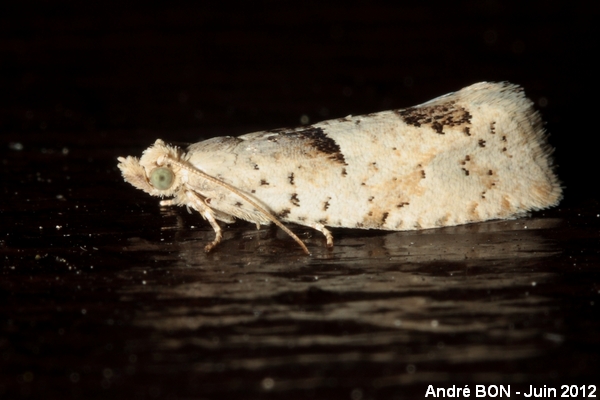
| Crescent Bell (Epinotia bilunana (Haworth, 1811)) |

|
|
Scientific name: Epinotia bilunana (Haworth, 1811) Common name: Crescent Bell French name: Epinotia bilunana Order: Lepidoptera Suborder: Microlepidoptera Family: Tortricidae Subfamily: Olethreutinae Wingspan: 13-17 mm. Biotope: Birch forests, parks and gardens. Geographic area: Europe (missing in the Iberian Peninsula and in Greece?) Flight time: May to August. Number of generations : 1 Caterpillar: Host plant: Birches (Betula spp). Caterpillars feed inside catkins. |
The Crescent Bell shows whitish to greyish white fore wings with two dark markings on each side of the median area. These markings start from the middle of the wing, between the costal edge and the inner edge, and extend up to the inner edge. They may vary in intensity from one moth to the other. The marking closer to the front draws a sharp point on the middle of the wing. The fore edge is paler and more diffuse than the hind edge. An upper side view of the moth in rest shows a crescent shape. The other marking is more rounded and often less sharply delimited. There are small black spots scattered over the entire surface of the fore wings. The hind wings are pale brown, a little darker towards the margin. They bear a whitish fringe. The Crescent Bell over winters as a caterpillar. There is a possible confusion with Epinotia ramella which is also linked to Birches. The fore marking is generally slightly broader and more contrasted. It shows a very sharp front edge. |
| [To know more about the Crescent Bell] [Top] |

|
You may explain this observation of Epinotia bilunana in my garden by the presence of Birches. |